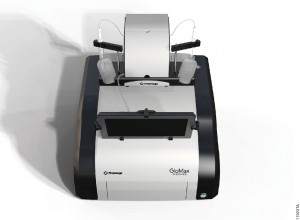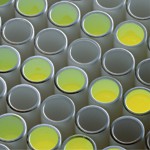
Luciferase assays are useful tools for studying a wide range of biological questions. They can be performed easily by adding a reagent that provides components necessary to generate a luminescent signal directly to cells or a cell lysate. However, once this reagent has been added, how long you wait to measure the signal becomes a key consideration in generating consistent data. Dependent on which luciferase assay you use, you may need a luminometer that can use injectors to deliver the assay reagents. The reason for this is simple, but can be confusing to new users.
Let’s start by discussing two types of luciferase assays: “flash” vs. “glow”.As their names imply, a “flash” luciferase assay is one where the signal is strong but short-lived. “Glow” type assays prolong the signal, so their half-lives are on the order of hours, not minutes. The trade-off is that “Glow”-type assays have lower signal intensities. For most applications, the trade-off is a good deal.
With these points in mind, we can discuss the array of Promega luciferase products. Most of our newer kits incorporate “GLO” into their names because they are designed as “Glow”-based assays. Their signal half-lives are long and give users a great deal of flexibility in timing the assay and injectors are not required. Other kits, such as our Luciferase Assay System, Renilla Luciferase Assay System, and Dual-Luciferase® Assay System are flash-based. In flash assays, the firefly signal half-life is about 10 minutes. For Renilla it’s only approximately 2 minutes. For these kits, it’s strongly recommended you use a luminometer with injectors.
Why? Well, knowing all we’ve discussed above, consider an experiment where you prepare a 96-well plate full of lysate from cells expressing one or both of these reporters. Let’s also imagine that each of these wells contains exactly the same amount of a luciferase reporter. And finally, let’s also imagine you used an 8-well multichannel pipette to add the assay reagent to each column, one-by-one. Once you add the assay reagent, the signal will peak almost immediately and begin to decline rapidly.
 So after you’ve put all the reagents into your wells, you will put the plate into your luminometer. Now for our flash-based assays, we suggest a read time of approximately 10 seconds. 96 wells x 10 seconds = 960 seconds, or 16 minutes! Remember the half-life of even a firefly signal in a flash assay is 10 minutes. This means that you’d expect the signal from well A1 to be at least twice as high as well H12 from the same starting sample. For Renilla, this would be even worse as the half-life is only about 2 minutes.
So after you’ve put all the reagents into your wells, you will put the plate into your luminometer. Now for our flash-based assays, we suggest a read time of approximately 10 seconds. 96 wells x 10 seconds = 960 seconds, or 16 minutes! Remember the half-life of even a firefly signal in a flash assay is 10 minutes. This means that you’d expect the signal from well A1 to be at least twice as high as well H12 from the same starting sample. For Renilla, this would be even worse as the half-life is only about 2 minutes.
When you consider all this, it becomes very clear why you don’t want to setup a flash based measurement this way. So if you have to use a flash-based assay there are essentially two good options:
- Use a single-tube luminometer and add your reagent to a single tube, immediately measure, and then repeat with the remaining samples.
- Use a luminometer with injectors. Most are easily programmed to inject the specific reagent, measure the signal, then move onto the next well and repeat.
Fortunately, “Glow” type assays work for most applications, so even if you don’t have injectors, you can still easily perform a luminescent assay.
Ben Schmidt
Latest posts by Ben Schmidt (see all)
- Tips for Successful Dual-Reporter Assays - December 6, 2019
- Why You Don’t Need to Select a Wavelength for a Luciferase Assay - June 7, 2019
- To inject or not inject? - September 15, 2014
